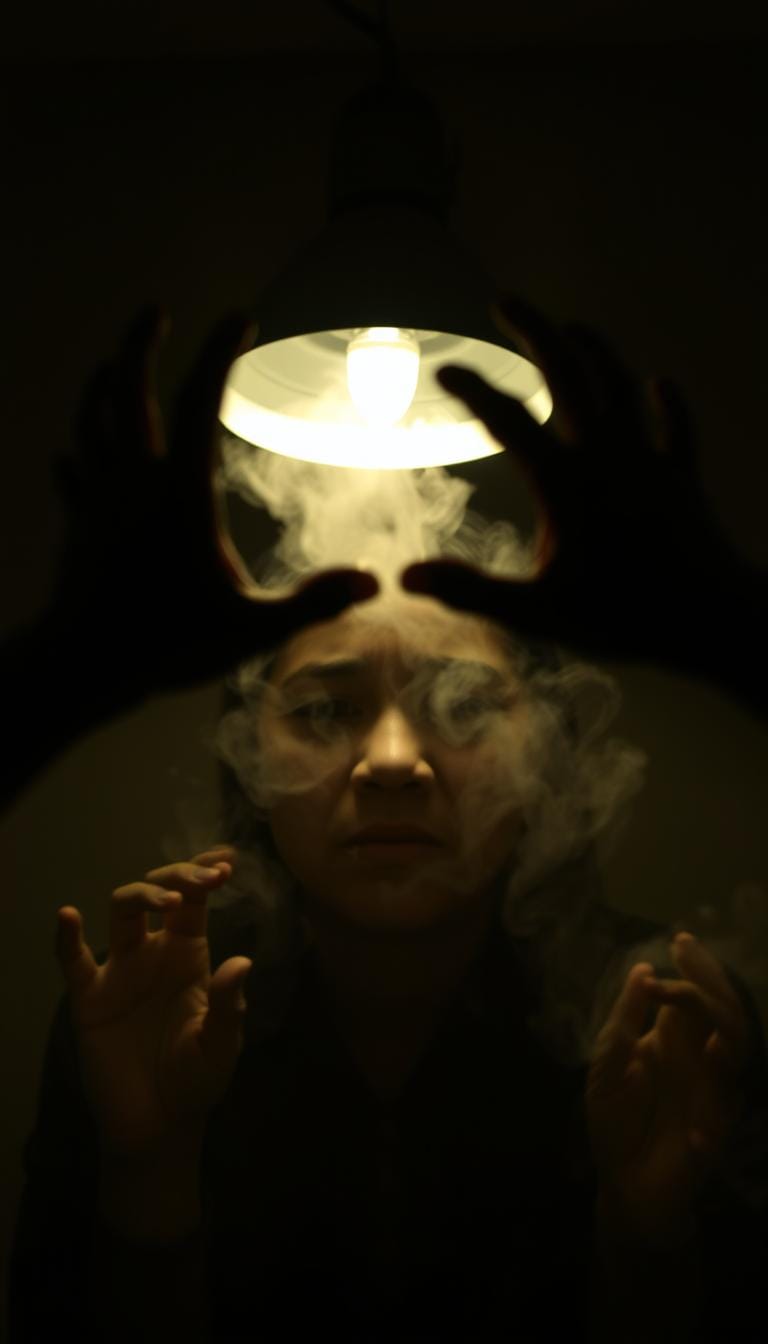Emotionally Abusive Parents: 7 Ways to Rebuild Self-Esteem
Table of Contents
Growing up with emotionally abusive parents has shaped my self-view. The constant criticism, neglect, or comparisons left deep scars on my self-worth. Many of us carry these wounds into adulthood, wondering if healing is even possible.
Healing from emotional abuse starts with one truth: you deserve to reclaim your strength. This journey isn’t easy, but it’s a path millions have walked before you. I know the pain of doubting your value, but rebuilding self-esteem is within reach.
This article shares seven practical steps I’ve learned through therapy, self-reflection, and support networks. These strategies focus on small, actionable changes to rebuild confidence and trust in yourself. From setting boundaries to rewriting negative self-talk, every step is designed to help you move forward.

Every person’s experience with emotionally abusive parents is unique, but healing from emotional abuse isn’t a solo battle. By facing these challenges head-on, you take control of your story. Let’s explore how to turn pain into growth—one step at a time.
Understanding Emotional Abuse from Parents
Seeing the signs of emotionally abusive parents is the first step to healing. This part looks at their behaviors, reasons, and patterns. It helps you understand your experiences better.

What Constitutes Emotional Abuse?
Emotional abuse from parents doesn’t leave physical marks but does deep harm. It includes:
- Constant criticism that chips away at self-worth
- Gaslighting to distort your perception of reality
- Withholding love or attention as punishment
- Manipulation through guilt or threats
Why Parents Become Emotionally Abusive?
Behind their actions, there might be unresolved pain, not malice. Key factors include:
- Unresolved trauma from their own childhood
- Mental health struggles like depression or anxiety
- Addiction masking deeper emotional voids
- Learned behaviors from their own families
The Cycle of Emotional Abuse in Families
These patterns often repeat across generations. My own journey showed how parents might:
- Pass down coping mechanisms they never questioned
- Create environments where children internalize shame
- Repeat the same harmful dynamics unconsciously
Understanding this cycle doesn’t excuse the behavior—but it can free you from repeating it. Awareness is the first step toward breaking free.
Recognizing the Signs of Emotionally Abusive Parents
Spotting signs of emotional abuse can be tricky. These behaviors often masquerade as “love” or “discipline.” I once thought my parents’ harsh words were “tough love.” But, I later saw their actions fit the bill of toxic relationships.

- Verbal red flags: Name-calling, constant criticism, or jokes that cut deep. My mom once told me I’d “never amount to anything” after a school presentation—a classic tactic to erode self-worth.
- Behavioral patterns: The “silent treatment,” extreme mood swings, or love given only when I conformed. My dad’s affection vanished whenever I set personal boundaries.
- Family dynamics: Scapegoating one child, favoritism, or involving others in conflicts (triangulation). My siblings and I were pitted against each other to keep us divided.
These signs create cycles where victims normalize disrespect. The toxic relationships framework helps see how small actions add up to systemic harm. Recognizing these patterns validates your feelings, not just “overreacting.”
My breakthrough came when I compared my experiences to real definitions of emotional abuse—not my parents’ excuses. Spotting these signs is the first step to reclaiming your truth.
The Long-term Effects of Growing Up with Emotionally Abusive Parents
Understanding the effects of emotional abuse means seeing how childhood shapes our adult lives. Many of us have invisible scars that affect how we see ourselves, our relationships, and our happiness. These scars aren’t weaknesses; they’re how we survived in toxic environments.
Impact on Self-esteem and Self-worth
Low self-esteem often starts early. Phrases like “You’re a burden” become beliefs we hold inside. Adults may face:
- Constant self-doubt or people-pleasing
- Fear of success or recognition
- Self-blame for others’ actions
Relationship Challenges in Adulthood
Patterns learned in childhood often repeat. Many of us:
- Attract partners who mirror abusive dynamics
- Dismiss red flags to avoid conflict
- Feel trapped in cycles of emotional neglect
Mental Health Consequences
Untreated mental health struggles often come from chronic stress. Common challenges include:
- Depression or anxiety disorders
- PTSD from recurring triggers
- Difficulty regulating emotions
Physical Health Manifestations
Our bodies remember trauma. Here’s how mental and physical health connect:
| Mental Health Struggle | Physical Symptoms |
|---|---|
| Chronic stress | Headaches, insomnia |
| Unresolved trauma | Stomach issues, chronic pain |
| Anxiety disorders | High blood pressure, fatigue |
These effects aren’t isolated. They form a web that requires patience to unravel. Healing starts by naming these patterns—not blaming ourselves for carrying them.
My Journey to Healing: Acknowledging the Past
Healing from emotional abuse starts with facing the past. For years, I hid my childhood trauma. Denying it seemed safer, but it only made my pain worse.
Breaking Through Denial
Recognizing the truth was my first step. I realized that ignoring my parents’ hurtful words didn’t keep me safe. It kept me trapped. Writing down those moments helped me see the patterns.
A therapist showed me how these patterns were not normal. Taking small steps made the truth feel more doable.
Validating My Own Experiences
Others told me my childhood wasn’t that bad. But I learned to trust my feelings. Joining support groups helped me see I wasn’t alone.
It was important to validate my pain. It was key to reclaiming my truth.
Processing Grief and Anger
Anger was my first emotion. I wondered why I accepted so much for so long. Then, grief hit: for the love I never got and the child I couldn’t protect.
Therapy helped me use these feelings for healing, not blame. My journey is about understanding my past, not changing it. Every step, from journaling to setting boundaries, is a quiet fight against the silence of my childhood.
Rebuilding Self-Esteem Through Self-Compassion
My healing journey started with kindness towards myself. It wasn’t simple, given years of harsh self-criticism. Yet, small changes in my thinking helped a lot. Here’s what helped me:
- Mindful awareness: I learned to catch my inner critic. I’d ask myself, “Would I say this to someone I love?”
- Kind affirmations
- Self-care rituals: Starting my day with meditation and ending it with gratitude lists helped me stay grounded.
But, I faced many challenges. Guilt and fear made me doubt my decision to be kind to myself. Yet, studies show self-compassion makes us stronger. When old doubts came up, I wrote them down. This helped me see things differently.
One big moment came when I understood self-compassion isn’t selfish. It’s as essential as taking care of a wound. Now, I make time for myself as I would any other important thing.
These steps didn’t erase my past, but they helped me trust myself more. Being kind to myself became my daily practice. It showed me that worth isn’t about being perfect.
Setting Boundaries with Toxic Family Members
Learning to set boundaries was my first step toward healing from toxic relationships. Growing up, I never knew what healthy boundaries looked like. Now, I don’t feel guilty about protecting my well-being. Coping strategies like identifying boundary types and practicing assertive communication helped me reclaim control.
Identifying Healthy vs. Unhealthy Boundaries
Understanding boundary types changed how I viewed interactions. Here’s what I learned:
| Type | Characteristics | Examples |
|---|---|---|
| Healthy | Flexible, respectful, and clear | “I’ll listen but need space after arguments.” |
| Rigid | Inflexible, isolatinging | Blocking all contact without dialogue |
| Porous | Letting others violate limits | Ignoring red flags to “keep the peace” |
I realized boundaries exist on a spectrum. Sometimes I chose weekly calls, other times no-contact felt safest.
Communicating Boundaries Effectively
- Use clear, “I” statements: “I need to leave now to stay calm.”
- Stay firm but calm. My family’s gaslighting (“You’re being unreasonable!”) didn’t sway me.
- Rehearse responses. I wrote scripts for common manipulative phrases.
Handling Pushback and Guilt
- Write down your reasons. Seeing them on paper strengthened my resolve.
- Set consequences upfront. “If you yell, I’ll end this call.”
- Lean on support networks. My therapist helped me counter shame.
Remember: honoring your needs isn’t selfish. Every boundary I set, big or small, was a step toward reclaiming my worth.
Reclaiming Your Narrative and Personal Identity
When I realized my parents’ words had shaped my identity, I knew I had to rebuild my sense of self. Healing from emotional abuse began with questioning the labels I’d carried for decades. “You’re unlovable,” “you’re a disappointment”—phrases that felt like truths but were just echoes of their pain.
I used coping strategies to rewrite my story. Journaling became my first tool. Writing down my thoughts raw and unfiltered helped me see which beliefs were mine versus theirs. I asked myself, “Does this thought serve me?” and let go of those that didn’t.
- Created a “truth list” of my values, skills, and dreams—ones my parents dismissed.
- Explored creative expression through art, painting emotions I couldn’t yet name.
- Joined therapy groups to hear others’ journeys and realize my narrative wasn’t fixed.
Rediscovering my voice took patience. Some days, old scripts resurfaced, but I learned to pause and ask, “Is this who I am, or who they wanted me to be?” Small wins—like choosing a career I loved instead of one they approved of—proved my identity wasn’t broken. It just needed space to grow.
This process isn’t linear. There are days when old doubts creep in, but healing from emotional abuse means I now have tools to address them. My journey taught me that reclaiming my narrative isn’t about erasing the past—it’s about making room for the truth of who I am.
Finding Support: Professional Help and Community Resources
Healing from childhood trauma doesn’t mean you have to do it alone. The right support resources can help you face challenges from childhood trauma. I learned that asking for help is a sign of strength, not weakness.
Therapy Options for Healing
Finding a trauma-informed therapist is key to effective therapy. I found cognitive-behavioral therapy (CBT) useful for changing negative thoughts. EMDR therapy helped me deal with anxiety by processing traumatic memories.
I also tried Internal Family Systems (IFS), which helped me understand parts of myself shaped by past abuse. When looking for a therapist, ask if they specialize in trauma. Be wary of those who don’t take your experiences seriously.
Support Groups and Peer Communities
Connecting with others who’ve gone through similar experiences can be validating. Online groups like Survivor’s Voice Forum and Healing from Toxic Families on Facebook provided safe spaces to share. The Sidran Institute’s trauma support network and local NAATP-certified groups also offer structured guidance.
These communities showed me I wasn’t alone.
Books and Practical Tools
I found solace in books like “The Body Keeps the Score” by Bessel van der Kolk and “Complex PTSD: From Surviving to Thriving” by Pete Walker. Podcasts like Trauma Therapist with Dr. Arielle Schwartz offered insights I could apply. Curated lists like Psychology Today’s trauma-focused self-help guides were also helpful.
These resources helped me turn abstract pain into concrete steps towards healing.
Creating New Family Patterns: Breaking the Cycle
Recognizing the toxic relationships from my emotionally abusive parents was the first step. Now, I’m focused on creating a better future. I want my children, friends, and partners to feel trust and respect. It’s a daily effort to replace old habits with new choices.
I keep a journal to catch moments of old patterns. For instance, if I want to criticize my partner, I pause. I ask myself: Would my parents have acted the same way? This helps me choose empathy over control. Therapy has also been key; my therapist helped me see how I’d minimized others’ feelings, a trait from my upbringing.
Here’s what works for me:
- Parenting differently: I read books like How to Talk So Kids Will Listen to practice active listening and validation.
- Boundary reviews: Monthly check-ins with my partner to discuss what’s working and where old habits resurface.
- Accountability partners: A support group for adult children of abusive parents keeps me honest about progress and setbacks.
Breaking cycles isn’t about being perfect—it’s about noticing and correcting when needed. By choosing kindness over blame, I’m building safe relationships. My kids see me apologize when I’m wrong, and that’s a start.
Conclusion: The Ongoing Journey of Healing from Emotional Abuse
Healing from emotional abuse isn’t a simple journey to the end. My path has shown me it’s full of ups and downs. Sometimes, I take steps back, but I always keep moving forward.
Setbacks are part of the journey, but they don’t undo all the progress. Every day, I get to build my strength and trust myself more.
Childhood trauma leaves deep scars, but healing is about learning to care for those wounds. I’ve learned to set boundaries and be kind to myself. This helps me handle triggers better.
Even years later, tough comments or stressful times can bring up old pain. But now, I know how to deal with it instead of letting it overwhelm me.
Milestones are important, like feeling joy without guilt or trusting someone with my story. These moments show me healing isn’t about forgetting the past. It’s about choosing how to live today.
Therapists, support groups, and books like “The Body Keeps the Score” have helped me see growth is possible. It may take time, but it’s worth it.
If you’re reading this, know your journey is valid. Healing from emotional abuse means rewriting a story written long ago. It’s hard, but the freedom to make choices and love yourself is worth it.
Your past doesn’t define you. It’s just one part of who you’ve become and who you’re becoming.






